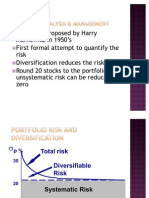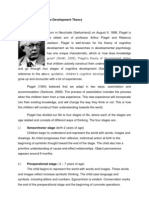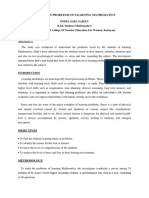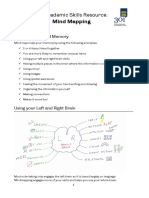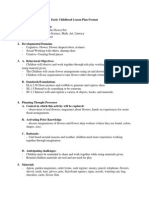Consumer Behavior, Eighth Edition SCHIFFMAN & KANUK
Chapter 7
Consumer Learning
7-1
�The Importance of Consumer Learning to New Product Success
Why did these products fail?
Listerine Toothpaste Ben-Gay Aspirin
Why did Pocket Packs succeed?
7-2
�Importance of Learning
Marketers must teach consumers:
where to buy how to use how to maintain how to dispose of products
7-3
�Learning Theories
Behavioral Theories: Theories based on the basis that learning takes place as the result of observable responses to external stimuli. Also known as stimulus response theory.
7-4
Cognitive Theories: A theory of learning based on mental information processing, often in response to problem solving.
�Consumer Learning
A process by which individuals acquire the purchase and consumption knowledge and experience that they apply to future related behavior.
7-5
�Learning Processes
Incidental: Intentional: learning acquired learning acquired as by accident or a result of a careful without much effort search for information
7-6
�Consumer learning contd.
Example some ads may induce learning (Brand names) even though the consumers attention is elsewhere (on a magzine article rather than the ads on facing page) Other ads are sought out and carefully read by consumers for making a purchase decision.
7-7
�Elements of Learning Theories
Motivation Cues Response Reinforcement
7-8
�Motivation
The degree of relevance or involvement determines consumer level of motivation to search for knowledge OR information about a product or a service.
7-9
�Cues
Motives serve to stimulate learning, Cues are the stimuli that gives direction to these motives e.g. an ad is a cue for consumer motivation for a specific product or service. In the market place price, styling, packaging, advertising and the store displays all serve as cues.
7-10
�Cues
Marketers teach motivated consumer segments why and how their products will fulfill the consumers need. Motives serve to stimulate learning.
7-11
�Response
How individuals react to a drive or cue How they behave constitute their response e.g. a marketer that provides consistent cues to a consumer may not always succeed in stimulating a purchase.
7-12
�Response contd
However if marketer succeeds in forming a favorable image of a particular product in consumers mind. It is likely that he or she will consider that product.
7-13
�Reinforcement
A positive or negative outcome that influences the likelihood that a specific behavior will be repeated in the future in response to a particular cue or stimulus.
7-14
�Figure 7.1 Product Usage Leads to Reinforcement
7-15
�Behavioral Learning Theories
Classical Conditioning Instrumental Conditioning Modeling or Observational Learning
7-16
�Classical Conditioning
A behavioral learning theory according to which a stimulus is paired with another stimulus that elicits a known response that serves to produce the same response when used alone.
7-17
�Example
If you usually listen to the 9 o clock news while waiting for dinner to be served you would tend to associate the 9 o, clock news with dinner, So that eventually the sounds of the 9 o clock news alone might cause your mouth to water even if dinner was not being prepared and even if you were not hungry.
7-18
�Instrumental (Operant) Conditioning
A behavioral theory of learning based on a trial-and-error process, with habits forced as the result of positive experiences (reinforcement) resulting from certain responses or behaviors.
7-19
�Figure 7.2B Analogous Model of Classical Conditioning
Unconditioned Stimulus Dinner aroma Unconditioned Response Salivation Conditioned Stimulus 9 oclock news
AFTER REPEATED PAIRINGS
Conditioned Stimulus 9 oclock news
Conditioned Response Salivation
7-20
�Strategic Applications of Classical Conditioning
Repetition Stimulus Generalization Stimulus Discrimination
7-21
�Repetition
Repetition increases strength of associations and slows forgetting but over time may result in advertising wearout.
Figure 7.3 Cosmetic Variations in Ads
7-22
�Three-Hit Theory
Repetition is the basis for the idea that three exposures to an ad are necessary for the ad to be effective The number of actual repetitions to equal three exposures is in question.
7-23
�Three-Hit Theory
1) to make consumers aware of the product 2) to show cosumers the relevance of the product 3) to remind them of its benefits according to others marketing scholars 11 to 12 repetitions
7-24
�Stimulus Generalization
The inability to perceive differences between slightly dissimilar stimuli.
7-25
�Continued.
It explain why some imitative me-too products succeed in the market place. Because Consumers confuse them with original product they have seen advertised
7-26
�Example
That an individual can learn to take dinner not only to the sound of 9 o clock news but also to the some what similar sound of Azan.
7-27
�Stimulus Generalization and Marketing
Product Line, Form and Category Extensions Family Branding Licensing Generalizing Usage Situations
7-28
�Figure 7.5 Product Line Extension (adding related products to an already established brand)
7-29
�Product form extensions
Such as crest toothpaste to to crest whitestrips, Listerine mouthwash to listerine paks Bath soaps to liquid soaps
7-30
�Figure 7.6 Product Form Extensions
7-31
�Figure 7.7 Product Category Extensions
7-32
�Family branding
The practice of marketing a whole line of company products under the same brand name
7-33
�Family branding
The practice of marketing a whole line of company products under the same brand name. A strategy that capitalizes on the consumers ability to generalized favorable brand associations from one product to others: e.g Nestle
7-34
�Licensing
Allowing a well known brand name to be affixed to products of another manufacturer. A strategy that operates on the principle of stimulus generalizations. Examples: names of designers, manufacturers, celebrities, corporations and even cartoon characters are attached for a fee i.e rented.
7-35
�Figure 7-8 Shoe Manufacturer Licenses Its Name
7-36
�Stimulus Discrimination
The ability to select a specific stimulus from among similar stimuli because of perceived differences. Positioning
Differentiation
7-37
�Figure 7.10 A Model of Instrumental Conditioning
Try Brand A Try Brand B Try Brand C Try Brand D
Repeat Behavior
Unrewarded Legs too tight Unrewarded Tight in seat Unrewarded Baggy in seat Reward Perfect fit
Stimulus Situation
(Need goodlooking jeans)
7-38
�Instrumental Conditioning
Consumers learn by means of trial and error process in which some purchase behaviors result in more favorable outcomes (rewards) than other purchase behaviors. A favorable experience is instrumental in teaching the individual to repeat a specific behavior.
7-39
�Instrumental Conditioning and Marketing
Customer Satisfaction (Reinforcement) Reinforcement Schedules
Shaping
Massed versus Distributed Learning
7-40
�Reinforcement
Negative Positive Reinforcement: Reinforcement: Positive outcomes that Unpleasant or negative outcomes that serve to strengthen the likelihood of a specific encourage a specific behavior response Example: Ad showing Example: Ad showing wrinkled (smooth) skin beautiful hair as a as reinforcement to buy reinforcement to buy skin cream shampoo
7-41
�Observational Learning
A process by which individuals observe the behavior of others, and consequences of such behavior. Also known as modeling or vicarious (observational) learning.
7-42
�Model or observational learning
Consumers often observe how others behave in response to certain situations (stimuli) and the ensuing (subsequent) results (reinforcement) that occur & The imitate (model) the positively reinforced behavior when faced with similar situations.
7-43
�Figure 7.11 Consumers Learn by Modeling
7-44
�Cognitive Learning Theory
Holds that the kind of learning most characteristic of human beings is problem solving, which enables individuals to gain some control over their environment.
7-45
�Figure 7.12 Appeal to Cognitive Processing
7-46
�Information Processing
A cognitive theory of human learning patterned after computer information processing that focuses on how information is stored in human memory and how it is retrieved.
7-47
�Figure 7.13 Information Processing and Memory Stores
Working Memory (Shortterm Store)
Sensory Input
Sensory Store
Rehearsal
Encoding
Longterm Store Retrieval
Forgotten; lost
Forgotten; lost
Forgotten; unavailable
7-48
�Retention
Information is stored in long-term memory
Episodically: by the order in which it is acquired Semantically: according to significant concepts
7-49
�Table 7.1 Models of Cognitive Learning
Innovation Adoption Model Innovation Decision Process
Promotional Model
Sequential Stages of Processing
Tricomponen t Model
DecisionMaking Model
Attention Interest Desire Action
Cognitive Affective Conative
Awareness Knowledge
Awareness Knowledge
Interest Evaluation Evaluation Persuasion Purchase Trial Decision Postpurchase Adoption Confirmation Evaluation
7-50
�Involvement Theory
A theory of consumer learning which postulates that consumers engage in a range of information processing activity from extensive to limited problem solving, depending on the relevance of the purchase.
7-51
�Figure 7.14
Figure 7.14 Split Brain Theory
Right/ Left Brain Hemispheres specialize in certain functions
7-52
�Figure 7.15 Encouraging Right and Left Brain Processing
7-53
�Issues in Involvement Theory
Involvement Theory and Media Strategy Involvement Theory and Consumer Relevance Central and Peripheral Routes to Persuasion Measures of Involvement
7-54
�Central and Peripheral Routes to Persuasion
A theory that proposes that highly involved consumers are best reached through ads that focus on the specific attributes of the product (the central route) while uninvolved consumers can be attracted through peripheral advertising cues such as the model or the setting (the peripheral route).
7-55
�Elaboration Likelihood Model (ELM)
A theory that suggests that a persons level of involvement during message processing is a critical factor in determining which route to persuasion is likely to be effective.
7-56
�Figure 7.16 Peripheral Route to Persuasion
7-57
�Figure 7.17 Unexpected Headline Metaphor Increases Impact
7-58
�The Elaboration Likelihood Model
Involvement HIGH Central Route LOW Peripheral Route
Message Arguments Influence Attitudes
7-59
Peripheral Cues Influence Attitudes
�Measures of Consumer Learning
Recognition and Recall Measures
Aided and Unaided Recall
Cognitive Responses to Advertising Copytesting Measures Attitudinal and Behavioral Measures of Brand Loyalty
7-60
�Figure 7.18 Starch Readership Scores Measure Learning
7-61
�Phases of Brand Loyalty
Cognitive Affective Conative Action
7-62
�Figure 7.19 Brand Loyalty As A Function of Relative Attitude and Patronage Behavior
Repeat Patronage High High Relative Attitude Low Loyalty Spurious Loyalty Low Latent Loyalty No Loyalty
7-63






